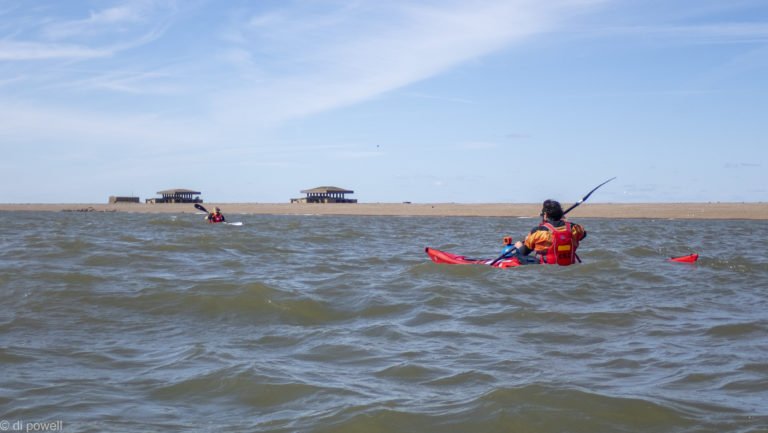
We punched through the waves with the flow behind us down the seaward side of Suffolk’s longest shingle spit. Suddenly we were surrounded by seals.
Britain’s largest new colony of seals is well-defended by unexploded ordnance and the North Sea. The Atlantic greys first appeared on Orford Ness three years ago, where their presence was kept secret by wildlife rangers until early 2024. Judging the colony of 200 seals as strong and stable, the National Trust called in environmental journalists for the big reveal. But the seals have seen few humans since as they live on an ex-weapons research base, largely undisturbed by land visitors or tourist boats.
Seeing them was a highlight of CKC’s recent trip to Suffolk. Their wildness and isolation could be seen in how they escorted us through their territory, policing us in formation. Like other sea kayakers, I’ve often seen seals watch from a distance and follow our boats but never so many, or with such boldness.
Orford Ness is a 10-mile-long shingle spit squeezed between the River Ore and the sea. The National Trust allows visitors (for a fee) to walk among the eerie ruins of radar research stations and nuclear detonator testing sites but only on few marked paths for safety reasons.
Our weekend in Suffolk’s restless shorelines and huge sea-like estuaries began with a Friday evening planning chat, where Jonathan, our sea leader, outlined two trips, along the Ness or up the River Deben (pronounced Deeben by locals).
As the wind on Saturday was potentially too strong for the Ness (force 4, gusting 5), we opted to do the Deben first – a good decision that delivered two days of strong sunshine and manageable winds.
On Saturday morning, we launched at Bawdsey Quay, opposite Felixstowe Ferry, thankfully not the container terminal (whose cranes were visible to the south) but a quaint village with yacht moorings. We put in below a sign that warned of ‘strong currents’ beside the ferry steps, carefully avoiding the tugboat-style ferry itself.
Dodging yachts, and the Horse Sands shoal, we set off upriver for Woodbridge, 9 miles away, with a lunch stop planned at 6 miles. We had the incoming tide pushing us along but a strong crosswind required plenty of skeg. Avoiding yachts and their support boats became one of the day’s themes.
I (Mary) was doubting my fitness after a winter on the sofa and awed when a gig-type old-world wooden rowing boat turned against the flow and swept past us. All 8 rowers were elderly women, so I worked harder to settle into a cadence.
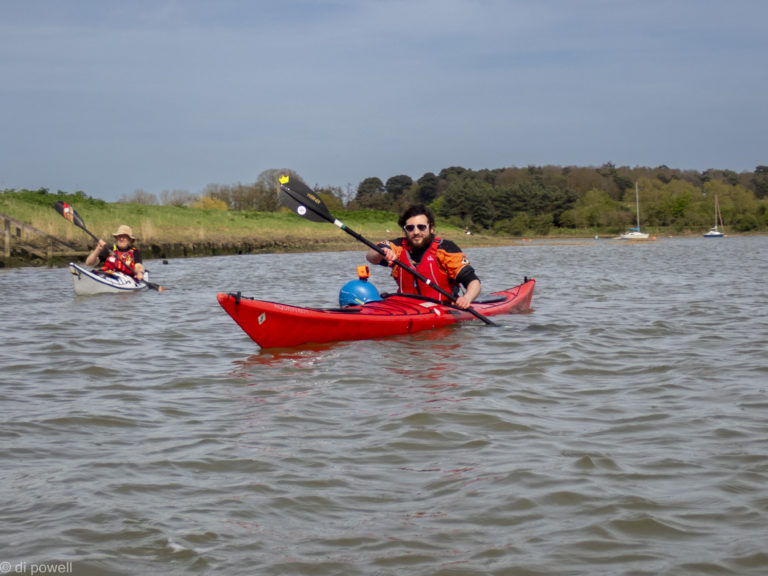
The Deben is nearly half a mile wide at points. After three miles, it opened out into Ramsholt bend and a cross wind from the west slapped up a properly sealike swell. Another three miles along, we evaded dinghy sailors to pull in at the Maybush pub in Waldringfield – an excellent fish platter and burgers sort of place, just as Jonathan had promised.
We enjoyed a lengthy lunch, before going on to Woodford, arriving in time turn around at slack water.
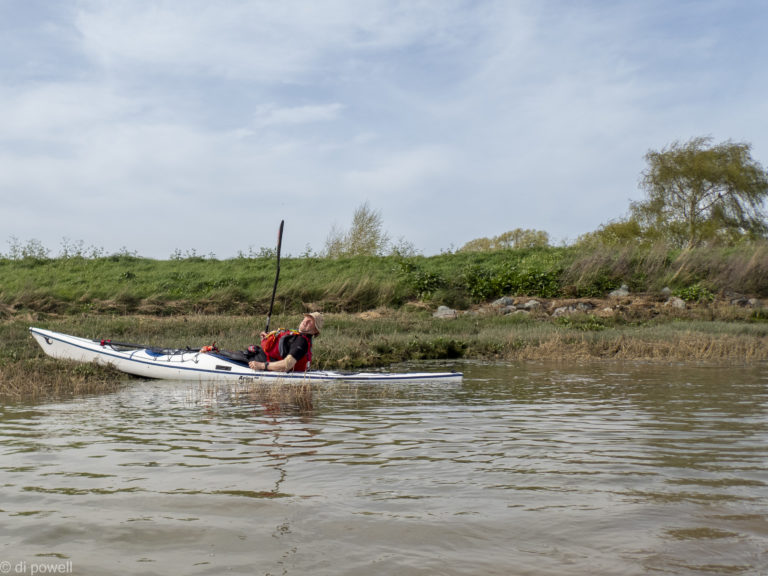
The hardest work was on the return trip as the incoming flow picked up, though we had the comfort of knowing it was in the Plan. We had another, quick stop at Waldringfield, hugged the salt marshes as the tide strengthened, and smacked through more whitecaps in the Ramsholt bend. The last 20 minutes were tough in a satisfying way.
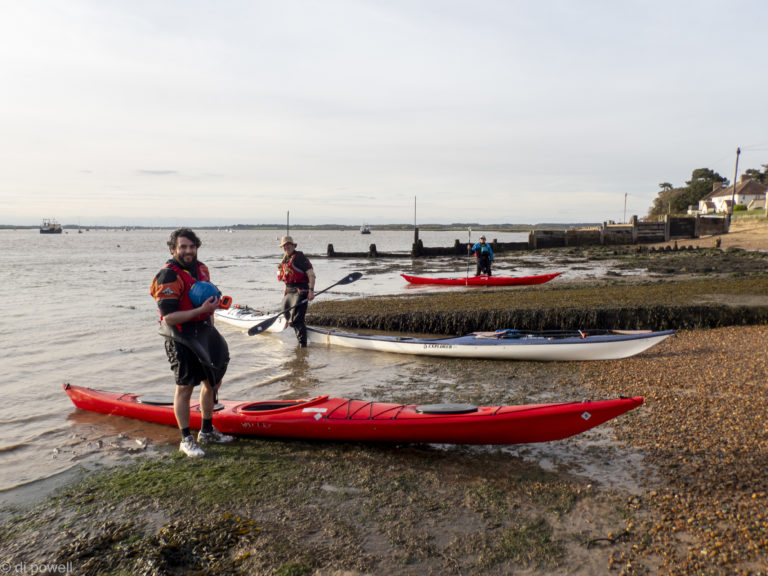
On Sunday morning, we tackled the Ness. The plan was to go down the spit, with the tide behind us, then turn into the mouth of the River Ore (also known as the Alde) and back up to our starting point. There was no landing on Orford Ness, and tricky currents at the river mouth. It was vital to hug the end of the Ness to avoid being swept past it.
We launched from the narrow neck of land at the top of the Ness, near Slaughden Sailing Club. The water was glassy and the sun strong. Our plan to avoid the strong wind had paid off, I thought.
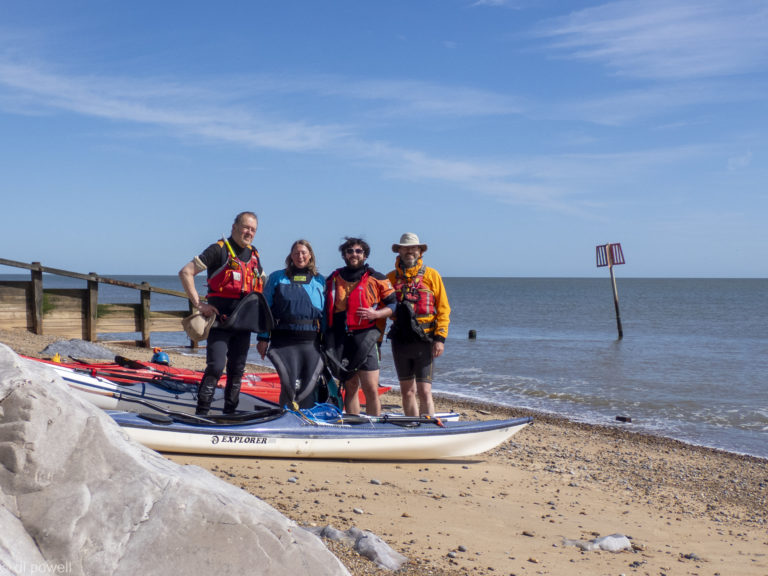
We saw the first seals early on, lying on the shingle in groups of 35 or more.
Orford Ness’ other big attraction is its weird-looking pagodas and pyramids, the remnants of blast testing sites. Bombs and nuclear weapons parts (everything bar the radioactive bit) were tested here. It was a radar research station in the 1930s and ’40s and used to develop military flying tactics from 1913 onwards.
It soon turned out that we were in giant eddy protected by protruding shingle where the main spit turns southwest. A line of white appeared on the horizon. ‘What’s that?’ I asked. ‘Wind against tide,’ explained David and Jonathan. The next 20 minutes were ‘very committing’, as they say. The sea remained choppy all the way and we were soon congratulating ourselves on being fine with it.
Sentry seals popped up about 20 metres offshore, evenly spaced, to defend a shingle bank dotted with cream and tan youngsters. Meanwhile, a squad of 10 or more bull seals formed up to escort us down the coast, sticking their heads high out of the water to watch us.
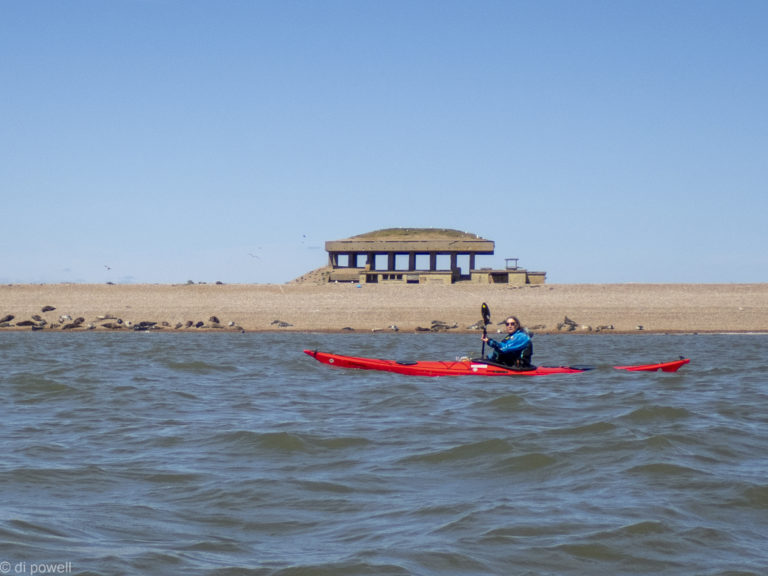
Ten kilometers on, we did a handbrake turn into the River Ore in brilliant sunshine that lit up the dramatic, flows in front of us. Counter-intuitively, the outgoing tide flows strongly into- and-upriver for several hours. We were relying on it to get us most of the way home. But first, we stopped for sandwiches on the far bank, and watched gulls being swept backwards by the flow on the estuary.
The river splits around Havergate Island bird sanctuary so we took the main flow up to Orford village, where we pulled up briefly at the jetty. Matt decided it was time for a flat white, despite Jonathan’s persuasive argument that ‘the longer we rest the more work we’ll have to do’. He started a rebel trend that soon spread to Jonathan himself (although for hot chocolate)!
By this time, the weather was turning greyer and windier. The final eight kilometers were tough and got tougher as the flow slackened. The river itself offered false hope in the form of hidden bends, but there was no mistaking our destination in the wide, sealike reach approaching Slaughden. We pulled in exhausted and watched a rowing boat of fishermen struggling static in the wind a few meters offshore. It was the end of a memorable trip.


